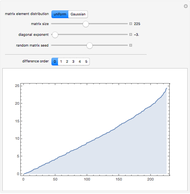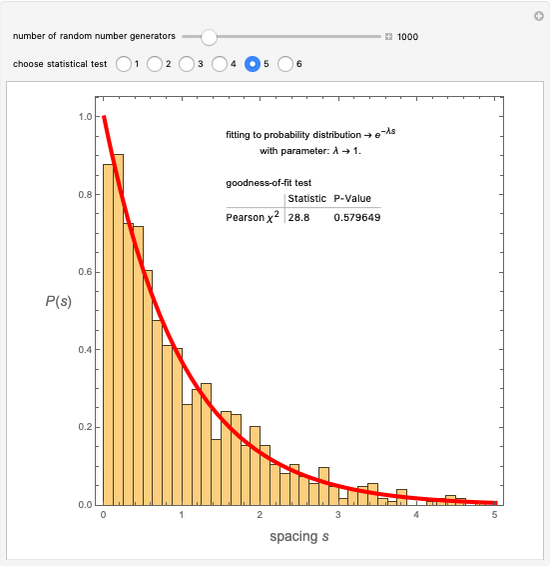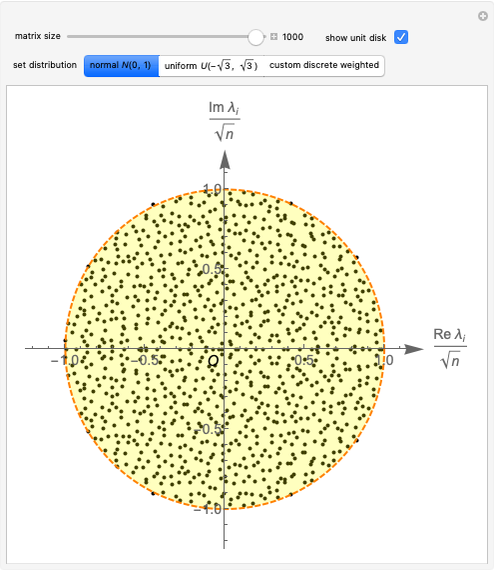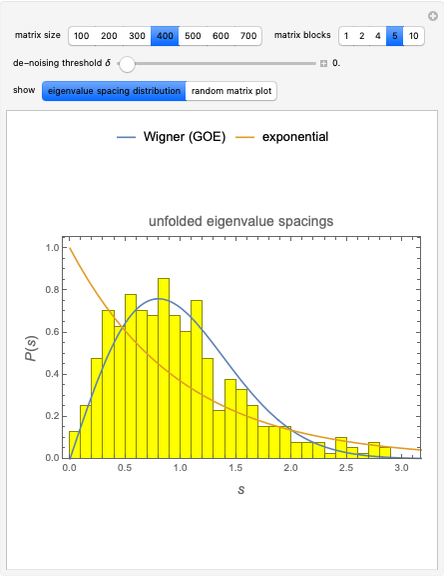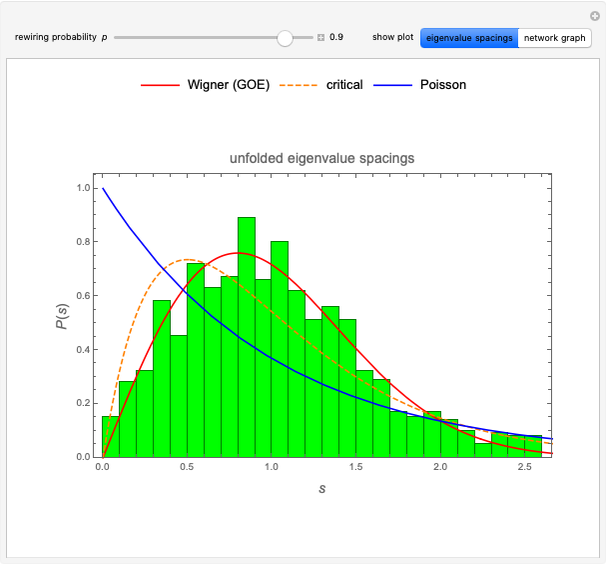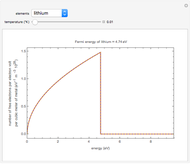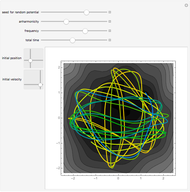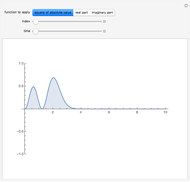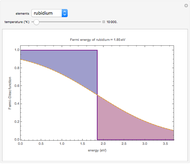Eigenvalue Unfolding in Spacing Distributions of Random Matrices

Requires a Wolfram Notebook System
Interact on desktop, mobile and cloud with the free Wolfram Player or other Wolfram Language products.
This Demonstration shows the effects of the unfolding procedure adopted in random matrix theory for rescaling eigenvalues of random Hermitian matrices before computing the nearest-neighbor spacing distribution of the matrix eigenvalues [1]. The purpose of unfolding is to separate large-scale variations in the eigenvalue spacings from local fluctuations. This can be achieved only if the local average varies on scales larger than the single-spacing scale. To achieve this goal, the average staircase function  needs to be computed for the average density
needs to be computed for the average density  of eigenvalues
of eigenvalues  . Then this staircase function is evaluated at each of the corresponding eigenvalues, hence
. Then this staircase function is evaluated at each of the corresponding eigenvalues, hence  . The obtained sequence of unfolded eigenvalues
. The obtained sequence of unfolded eigenvalues  exhibits average spacing equal to one and uniform density distribution. It is therefore straightforward to verify that the nearest-neighbor spacing distribution follows the Wigner surmise function for the Gaussian orthogonal ensemble (GOE) distribution.
exhibits average spacing equal to one and uniform density distribution. It is therefore straightforward to verify that the nearest-neighbor spacing distribution follows the Wigner surmise function for the Gaussian orthogonal ensemble (GOE) distribution.
Contributed by: Jessica Alfonsi (June 2021)
(Padova, Italy)
Open content licensed under CC BY-NC-SA
Snapshots
Details
Snapshot 1: default setting with matrix size 
Snapshot 2: same as Snapshot 1 but with unfolded eigenvalues
Snapshot 3: unfolded eigenvalues for matrix size 
References
[1] T. Timberlake, "Random Numbers and Random Matrices: Quantum Chaos Meets Number Theory," American Journal of Physics, 74(6), 2006 pp. 547–553. doi:10.1119/1.2198883.
[2] T. Timberlake. "Random Numbers and Random Matrices." (May 27, 2021) sites.berry.edu/ttimberlake/research/random-numbers-and-random-matrices.
Permanent Citation







